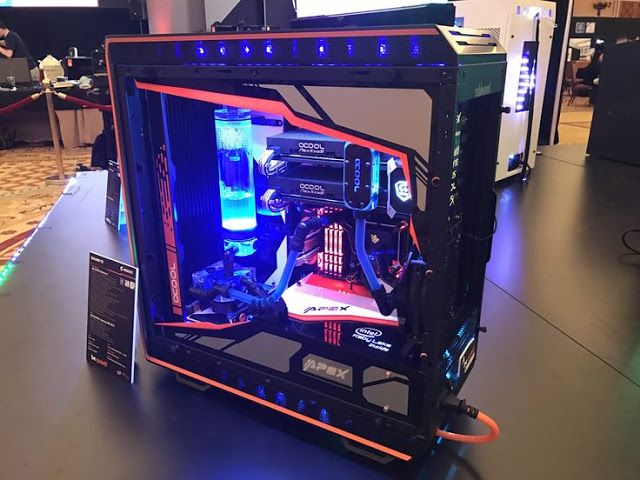Firmware in Diagnosing CPU Failures
In the intricate world of computer hardware, diagnosing issues can often be a daunting task, particularly when it comes to central processing units (CPUs). CPUs are the heart of any computer system, orchestrating everything from simple calculations to complex computations. When a CPU malfunctions, the impact on system performance can be severe. Understanding the roles of BIOS (Basic Input/Output System) and firmware in diagnosing CPU failures is crucial for both tech enthusiasts and professionals alike. This blog post delves into how these foundational components aid in troubleshooting and resolving CPU-related issues.
Understanding BIOS and Firmware
Before diving into their diagnostic roles, it’s essential to understand what BIOS and firmware are.
BIOS: The BIOS is a fundamental piece of software embedded on the motherboard’s ROM (Read-Only Memory). It is responsible for initializing and testing hardware components during the boot process and providing an interface between the operating system and the hardware. The BIOS performs a Power-On Self Test (POST) to ensure that all essential components, including the CPU, are functioning correctly before the operating system loads.
Firmware: Firmware, often used interchangeably with BIOS, is a broader term referring to the specialized software embedded in hardware components. While the BIOS is a type of firmware, firmware also encompasses other low-level software found in various hardware devices, such as storage controllers, network cards, and more. Firmware controls the hardware’s operations and can be updated to fix bugs, improve performance, or add new features. Feel free to visit their page to learn the difference between cpu and gpu architecture.
The Diagnostic Role of BIOS in CPU Failures
When a CPU failure occurs, the BIOS plays a crucial role in diagnosing the problem. Here’s how:
- Power-On Self Test (POST): The POST process is the initial step in the BIOS’s diagnostic routine. Upon powering up the computer, the BIOS runs a series of diagnostic tests to ensure that the CPU and other critical components are working correctly. If the CPU fails the POST, the BIOS typically signals this failure through beep codes or LED indicators. Different patterns or sequences of beeps can indicate specific issues, such as a failing CPU or a problem with the CPU’s connection to the motherboard.
- Error Codes and Beep Codes: During POST, if the BIOS detects a problem with the CPU, it may generate error codes or beep codes. These codes vary by motherboard manufacturer and model but are invaluable for pinpointing issues. For example, a series of short beeps might indicate a CPU failure, while a single long beep could suggest a problem with the motherboard or memory. Consulting the motherboard’s manual or the manufacturer’s website can provide detailed information on interpreting these codes.
- BIOS Updates: Sometimes, CPU failures can stem from compatibility issues between the CPU and the motherboard. BIOS updates can resolve these issues by providing support for newer CPUs or fixing bugs that may cause system instability. Updating the BIOS to the latest version can improve hardware compatibility and resolve issues that may appear as CPU failures.
- Configuration Settings: The BIOS allows users to configure various settings related to the CPU, such as clock speeds and voltage. Incorrectly configured settings can lead to system instability or perceived CPU failures. Accessing the BIOS setup utility and restoring default settings or adjusting configurations can help resolve issues related to CPU performance.
Firmware and CPU Diagnostics
Firmware, as the low-level software embedded in various hardware components, also plays a role in diagnosing CPU issues. Here’s how firmware contributes to the process:
- Microcode Updates: CPUs rely on microcode—low-level instructions that can be updated to fix bugs or improve performance. Firmware updates for the motherboard or CPU can include these microcode updates. If a CPU exhibits unusual behavior or fails to operate correctly, updating the firmware to the latest version can address underlying issues by applying these fixes.
- Thermal Management: Many modern CPUs and motherboards have built-in thermal sensors and firmware-controlled cooling systems. Firmware can manage CPU temperature by adjusting fan speeds and other cooling mechanisms. If a CPU is overheating, firmware settings may need adjustment or an update to ensure proper thermal management. Inadequate cooling can lead to CPU throttling or shutdowns, which may be misinterpreted as CPU failures.
- Error Reporting and Logging: Firmware can include diagnostic tools that report and log errors related to the CPU and other components. These logs can provide valuable insights into the nature of the failure, such as specific error codes or timestamps of when issues occurred. Reviewing these logs can help technicians diagnose and resolve CPU-related problems more effectively.

Troubleshooting Tips
Diagnosing CPU failures often involves a combination of BIOS and firmware troubleshooting. Here are some practical tips:
- Check for Beep Codes or Error Messages: Refer to your motherboard’s documentation to interpret beep codes or error messages. These indicators can guide you toward identifying whether the issue lies with the CPU, memory, or another component.
- Update BIOS and Firmware: Ensure that your BIOS and firmware are up to date. Manufacturers release updates to address bugs, improve compatibility, and enhance system stability. Installing the latest updates can resolve issues caused by outdated software.
- Verify Connections and Components: Ensure that the CPU is properly seated in its socket and that all power connectors are securely attached. Loose or improperly connected components can cause system failures that may mimic CPU problems.
- Perform a Clean Install: If all else fails, performing a clean install of the operating system can help determine if the issue is software-related or a hardware failure. Sometimes, corrupted system files or drivers can cause symptoms that resemble CPU failures.
Conclusion
Diagnosing CPU failures can be a complex task, but understanding the roles of BIOS and firmware can significantly aid in the process. The BIOS provides essential diagnostic functions during the POST process, generates error codes, and allows for configuration adjustments. Firmware updates and settings play a vital role in ensuring that the CPU operates correctly and efficiently. By leveraging these tools and techniques, you can effectively troubleshoot and resolve CPU-related issues, ensuring your computer system remains reliable and performant.
In the ever-evolving landscape of technology, staying informed about the diagnostic capabilities of BIOS and firmware can save time and frustration, helping you maintain a smoothly functioning computer system.









